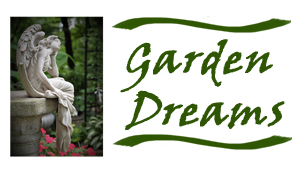
Our yard is mostly shady. Even our “sun garden” has only half sun during the day. So, we have tried lots of varieties of annuals and perennials.
Let’s talk about the pros and cons of each.
Annuals
Annuals – They provide the most brilliant color for your garden. The downside is that you have to buy and plant them every year unless you grow from seed. Here are some of our favorites.
Begonias –
- Pro: Wonderful color especially with the tuberous variety.
- Con: They can tend to rot out if kept too wet. Also, the branches can easily break especially if they get too lanky.
Salvia –
- Pro: long lasting color. Easy to grow.
- Con: They take awhile to get going. Prefers hot and dry, if you don’t have that.
Petunias –
- Pro: Probably the most colorful flower for your garden. Comes in almost every color. Blooms constantly and well into fall.
- Con: Will get lanky if not pruned. Needs a lot of water and fertilizer, but needs to dry out between waterings.
Impatiens –
- Pro: they provide season-long brilliant color and are fairly easy to take care of.
- Con: They often develop root rot or a fungus infection especially toward the end of the season. One of our local nurseries, Malmborgs, had a variety that was fungus resistant. They lasted very well all summer and fall.
Perennials
Perennials come up every year, at least they’re supposed to. If they do, it is wonderful to see them popping up in the spring after a long winter. It also saves money to have flowers and plants that you don’t have to buy every year.
If they don’t come back, it can disrupt your garden plan and you have to add or adjust plants and flowers to fill in the bare spots.
Here are some of the favorite perennials in our garden.
Hostas –
Hostas are so dependable and hearty. Unless you get the dreaded virus X which can spread from plant to plant, they will come up every spring. We have over 200 in our garden and we’ve only had about two not come back after winter in 8 years.
When choosing hostas, make sure you take into account 3 characteristics.
- Size when mature
- Stature – some stand up straight, some lay down.
- Color
You might need to add a fourth concern if you have deer in your area – whether the hostas are deer resistant.

The hosta lined path. This is the shadiest part of the garden.
Let’s talk about flowering perennials.
Black-eyed Susan (Rudbeckia) –
- A very nice addition to provide blooming later in summer through fall. Some varieties are shorter, some are taller for the middle or back of the garden. Prefers mostly sun.
Oriental and Asiatic Lilies –
- Sprouts early, blooms end of June to middle of July. Taller, use toward the back of the garden. Prefers sun.
Delphinium –
- One of the early bloomers here. Provides such a nice blue or purple color addition to the garden. Stake up the stalks or they’ll bend over. Sometimes you may get a second bloom toward the end of summer if you cut off the dead blooms.









Love it! Such talent!
I love how symmetrical everything is and all the vignettes. I really love formal garden rather than the cottage style. I also have a lot of shade, 2 -60+yr old sycamores and a giant Silver Maple on a very small yard..I use hosta, Japanese Maples, hydrangea, fern, forest grass, hollies, lilies and impatience. Recently we added 4 Rising Sun redbuds, but the ones in deeper shade don’t color up like the one we have in the sunniest spot in the garden. We also started to buy statues, we love them so much…I so enjoy your videos and cannot wait to see what you do next year..!! thanks for sharing your gardening ideas with all of us…Rose Wolfe